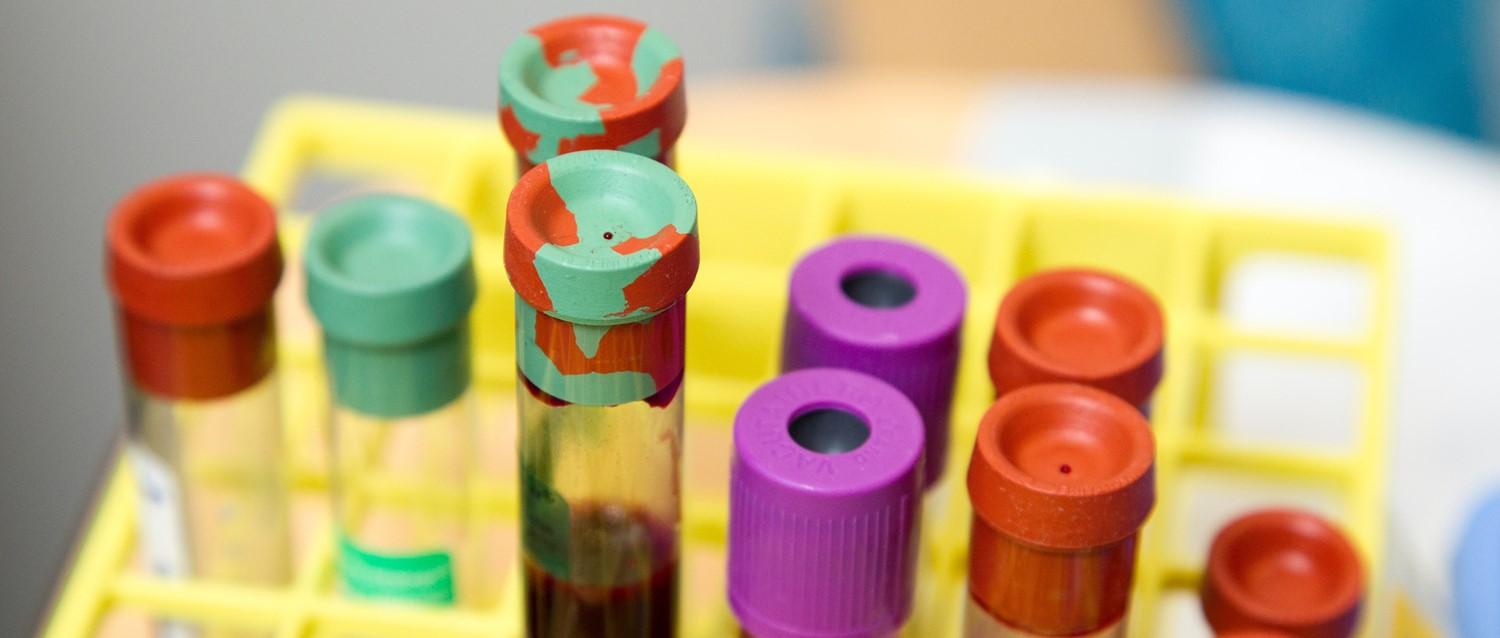
Why has there been an increase of hepatitis in children?
Peer reviewed by Dr Krishna Vakharia, MRCGPLast updated by Amberley DavisLast updated 15 May 2023
Meets Patient’s editorial guidelines
- DownloadDownload
- Share
- Language
- Discussion
Despite global efforts to eliminate viral hepatitis by 2030, the UK and many other countries experienced a mysterious outbreak of hepatitis in children in 2022. While the surge has now largely subsided, 2023 research reveals a link with a common childhood virus.
In this article:
Continue reading below
A rise in hepatitis in children
In 2022, 270 children under 10 years of age were diagnosed with hepatitis - inflammation of the liver - in the UK1. This unusually high number of hepatitis in children caused the UK Health Security Agency (UKHSA) to jump into action to figure out the reason behind the outbreak.
There are many types of hepatitis in children, and these have various causes. Depending on the hepatitis type, this liver condition can be very treatable, but it can also sometimes be life-threatening. Most types - hepatitis A, B, C, D, and E - are caused by an infection with a virus. However, according to the UKHSA, these known hepatitis viruses have not been found in the children affected2.
Hepatitis in children - the basics
What is hepatitis?
Hepatitis is a condition in which the liver has become inflamed.
Acute hepatitis - is a short-lasting illness.
Chronic hepatitis - when the illness lasts six months or longer. Acute hepatitis sometimes becomes chronic. Once chronic, it can cause long-term liver damage.
Hepatitis symptoms in children
Symptoms of hepatitis in children include:
Dark urine and greyish stools (poo).
Muscle or joint pain.
Itchy skin.
What causes hepatitis in children?
There are a number of causes for hepatitis in children and adults alike. Different causes correspond to different types of hepatitis, which are treated differently.
Viral hepatitis - most common cause, hepatitis A, B, C, D, and E viruses and certain other infections can lead to hepatitis. These spread in various ways. For example, hepatitis A and E viruses usually spread through contaminated food or drink, while B, C, and D viruses spread through blood or bodily fluids.
Non-alcoholic fatty liver disease - the most common form of chronic liver disease in children, this is a range of conditions caused by a build-up of fat in the liver. Hepatitis is one effect this can have.
Toxins - a rare cause, toxins are substances harmful to the body. Some medications can trigger toxic reactions in some people. Others store harmful levels of iron (haemochromatosis) or copper (Wilson's disease).
Autoimmune hepatitis - a rare cause, a condition where the immune system attacks and damages the liver.
Is hepatitis in children life-threatening?
It very much depends on the type of hepatitis. While some types will heal without any serious consequences, others like hepatitis A can, in very rare cases, lead to severe, life-threatening liver damage - called fulminant hepatitis3 - and hepatitis B may turn into fatal primary liver cancer4.
What caused the surge of hepatitis in children?
To cover all bases, healthcare officials have been investigating whether these cases of hepatitis in children could be linked to either a viral or non-viral form of hepatitis.
The UKHSA has explored three main theories:
This could be a new hepatitis-causing virus that hasn't yet been identified.
This could be an existing hepatitis virus, or existing viruses combining, causing new symptoms.
This could be non-viral - for example, hepatitis can be caused by toxins or medications.
For a while, the leading theory has been that infections of hepatitis in children caused by adenovirus could be to blame.
"Studies have found that all patients with unexplained hepatitis had high levels of adenovirus, a common virus that can spread from person to person, causing respiratory symptoms, vomiting and diarrhoea in children," explains Natasha North from British Liver Trust.
Adenovirus can occasionally also cause other serious infections. The COVID-19 pandemic has meant that children have been mixing less. Since 2022, children have been mixing more, and so certain infections, including adenovirus, have been circulating at a higher rate.
2023 research makes huge breakthrough
In March 2023, two scientific studies revealed that the rise in unexplained childhood hepatitis cases is linked to a virus called adeno-associated virus 2 (AAV2) - another common childhood virus that affects up to 90% of the population5, and that's similar in structure to adenoviruses.
The studies detected AAV2 in 81% and 96.4% of unexplained cases respectively - rates that were significantly higher than children who weren’t infected with hepatitis. This may suggest that AAV2 could directly cause this strain of hepatitis, but it could also be a more detectable biomarker of an adenovirus infection - which could also be the underlying cause.
The researchers also found that 93% of infected children carried a particular gene that affects the immune system. This suggests that some children may be genetically more vulnerable to this form of hepatitis.
Could there be a link with COVID-19?
In 2022, the COVID-19 virus was one of the possible infections under scrutiny. Some of the children who contracted hepatitis had recently been infected with COVID-19, although experts caution that this is to be expected given the high COVID-19 infection rates in this age group.
Experts also stress that there is no link between these incidences of hepatitis and the COVID-19 vaccine2. This is because no vaccinations were given to the children who were under 5 years of age - the age group which makes up over 75% of current hepatitis cases.
Continue reading below
Hepatitis in children - what is the advice for parents?
First and foremost, experts would like parents to know that the risk to public health is minimal. If your child develops the common mild symptoms associated with a viral infection - don't panic. The chance of them developing hepatitis is still extremely low.
They recommend the following precautions:
You don't need to contact the NHS unless your child is very unwell. For example, if they have trouble breathing, if they are not eating or drinking, or if they develop jaundice (yellowing of the eyes or skin).
If your child's symptoms are rapidly getting worse or you are worried, contact your GP or, if in the UK, call the NHS on 111.
Children who are unwell should be kept at home and shouldn't go to school or nursery.
Children with gastrointestinal symptoms - including vomiting and diarrhoea - should remain at home until 48 hours after the symptoms have passed unless they have any of the worrying signs above.
Far from a national issue
The UK has been just one of 34 countries experiencing a rise in unexplained hepatitis in children6. However, we do know that this outbreak is unrelated to the 2022 hepatitis A cases in the USA - these have been connected to contaminated strawberries that were imported from northern Mexico to California between March and April 2022, leading to 18 confirmed cases as of 5th July.
Continue reading below
Further reading
Patient picks for Hepatitis

Digestive health
Why has there been an increase of hepatitis in children?
Despite global efforts to eliminate viral hepatitis by 2030, the UK and many other countries experienced a mysterious outbreak of hepatitis in children in 2022. While the surge has now largely subsided, 2023 research reveals a link with a common childhood virus.
by Amberley Davis

Digestive health
What you need to know about hepatitis
The World Health Organization's global hepatitis strategy aims to reduce new hepatitis infections by 90% and deaths by 65% by 2030. The UK has made great strides towards this target by increasing vaccinations and introducing new and improved treatments. Testing has also been increased and the NHS has now introduced a simple, at home self-test for hepatitis C. Find out here what hepatitis does to the body and what causes it.
by Lawrence Higgins
Continue reading below
Article history
The information on this page is peer reviewed by qualified clinicians.
Next review due: 15 May 2026
15 May 2023 | Latest version
28 Jul 2022 | Originally published
Authored by:
Amberley Davis

Ask, share, connect.
Browse discussions, ask questions, and share experiences across hundreds of health topics.

Feeling unwell?
Assess your symptoms online for free
Sign up to the Patient newsletter
Your weekly dose of clear, trustworthy health advice - written to help you feel informed, confident and in control.
By subscribing you accept our Privacy Policy. You can unsubscribe at any time. We never sell your data.